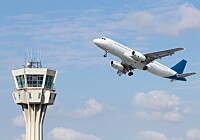Helping British travellers get through EU passport control faster will be among the objectives at today’s EU-UK summit – possibly including use of e-gates – Nick Thomas-Symonds, the UK’s European relations minister, has stated.
Asked by journalists if he will be asking for Britons to be able to use the fast-track gates, Mr Thomas-Symonds, said: “I am certainly pushing for people to be able to go through far more quickly.
“I think we can all agree that not being stuck in queues, and having more time to spend, whether on holiday or on work trips, would be a very sensible objective.”
At present there is no EU-wide rule that states Britons must be allowed to enter and exit the Schengen area via e-gates, known in France as Parafes (there is not usually any passport control within Schengen itself).
Having said that, France already permits Britons, and several other nationalities including Americans, Canadians and Australians, to use these gates (see this link).
This is reciprocated by the UK, which allows EU citizens to enter via its own automatic passport gates.
In France, Parafes exist at: Roissy Charles de Gaulle, Orly, Nice, Lyon, Bâle-Mulhouse, Bordeaux and Marseille airports, as well as at Paris’s Gare du Nord Eurostar terminal and the Eurotunnel terminal at Coquelles.
However, there is one post-Brexit complication to this: short-stay British visitors subject to the Schengen area’s 90/180 days visa-free rules are still expected to look for a border guard who can stamp their passport at the border to monitor respect of their visa-free days.
Not obtaining a stamp can cause confusion on a future exit/entrance as to how long the visitor has spent in the zone.
Getting the passport stamped is thus advised by the French government as well as the UK in its France Travel Advice which states: “Make sure you get your passport stamped on entry and exit”.
Airports have previously told us there is usually a border guard’s desk near the automatic gates so this is possible (and often quicker than joining the non-Parafe gate queues to see border guards).
So, in this respect, a UK-EU agreement on use of e-gates by Britons may not change much with regard to France.
More broadly, however, ‘having more time to spend’ could also potentially extend to asking for an easing of the 90/180 rules for Britons, which campaigners from the France Visa Free Facebook group have been calling for.
Since Brexit, many UK second-home owners, most of whom bought before Brexit under flexible EU-citizen rules, have been left frustrated by the difficulty of staying more than three months at a time at their French homes. Many had been in the habit of spending half the year in France.
In 2024, a campaign led to the French parliament voting to allow British second-home owners easy visiting rights (limited to France alone, which can set its own national rules for its territory) to spend more than three months with no, or minimal, formalities. However, this was then rejected on a technicality.
British second-home owners currently cannot stay in France (and the wider Schengen area) for four to six months at a stretch without undertaking ‘temporary long-stay visa’ formalities. Under British immigration rules, EU citizens may stay in the UK visa-free for up to six months at a time.
More changes coming due to EES
As of October, the EU’s new European Entry / Exit System digital borders scheme is set to start and it is intended that it will (probably after a first six-month period of ‘phasing in’), mean the end of passport stamping.
Airports’ body Union des Aéroports Français (UAF) told The Connexion that the Parafe gates are being adapted to help speed up this process amid fears of longer queues as non-EU visitors will have to give fingerprints and a facial image to be logged into a database.
We understand that use of a Parafe will not, in this case, be possible on a person’s first entry into (or exit from) the Schengen area after EES goes live.
However, UAF says it should be possible on subsequent entries to use a combination of ‘pre-registration’ of some personal details (the larger airports and Eurostar and Eurotunnel terminals will have self-service ‘kiosks’) and a Parafe gate, to avoid having to join longer ‘other passport’ manual queues.
The Parafes are being adapted to be used in conjunction with EES to reflect this, UAF reports.
It is not yet known whether EES will cause new hold-ups for Britons who live in the EU on residency cards and who can currently come and go through the automatic gates without issues, ie, whether the gates will recognise them as British residents in the EU, exempt from EES, or whether the system will block because it will see them as non-EU citizens who have not registered in EES.
Read more: EES - will foreign residents of France be able to use e-gates?
Earlier this year a legal expert for UAF, Gaël Léon, told The Connexion: “The French authorities are carrying out legal and technical work with a view to making this [recognition of residents’ status by the Parafes] possible in due course.
“There remain, however, some obstacles to deal with – especially with regards to Cnil [data protection authority] and the Conseil d’état [top administrative authority] relating to regulatory aspects.
“That makes it impossible to give a calendar for when it will be put in place.”
Mr Léon added: “The French airports have the same objective of maintaining this simplified border route via the Parafes for third-country [non-EU] citizens who are long-term residents, and in recent months we have had regular exchanges with the authorities to optimise all possible passenger routes depending on the type of traveller.”





























